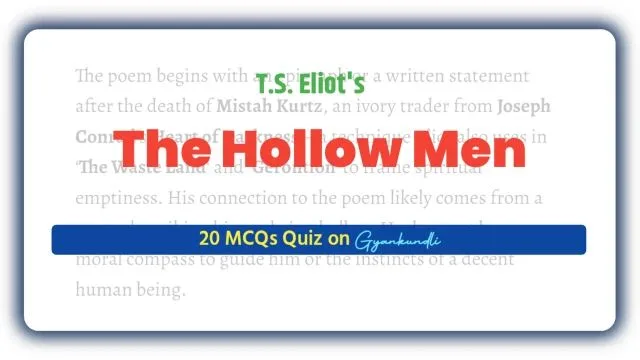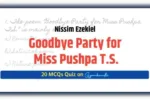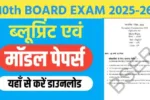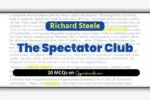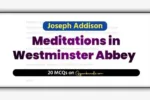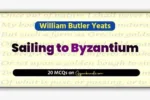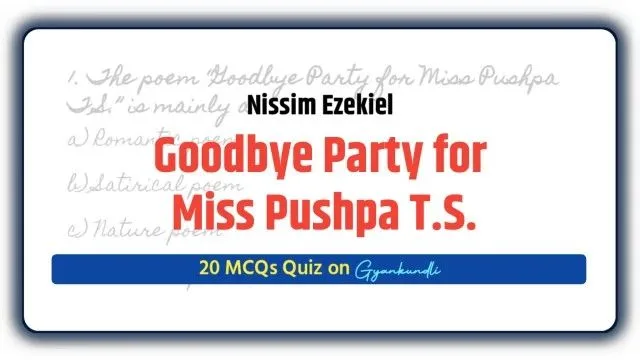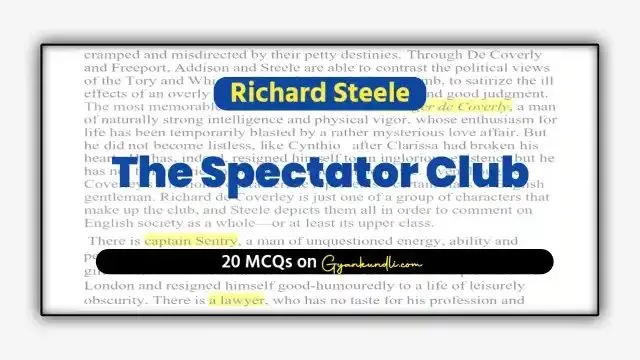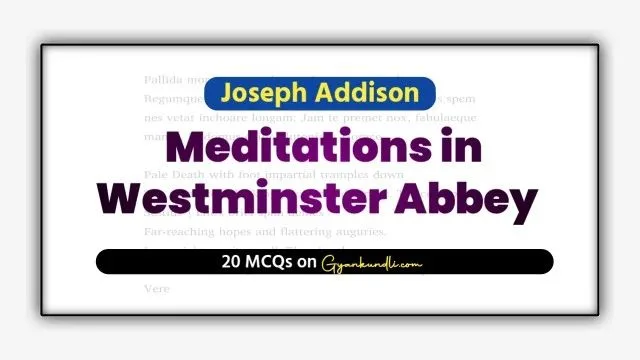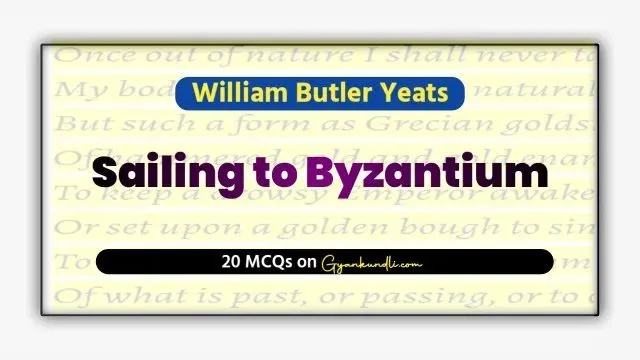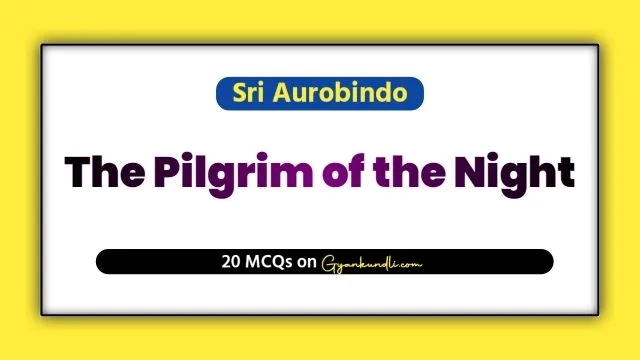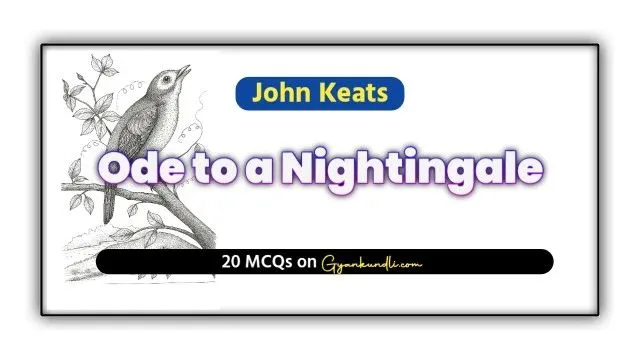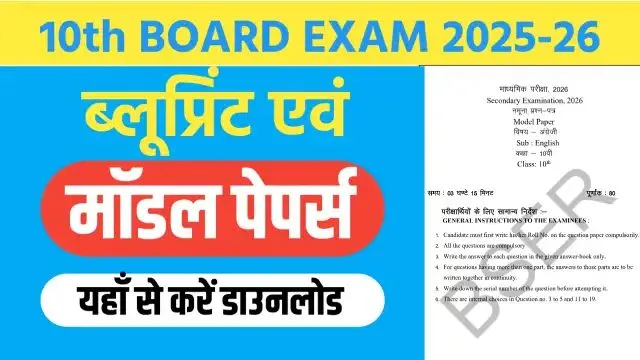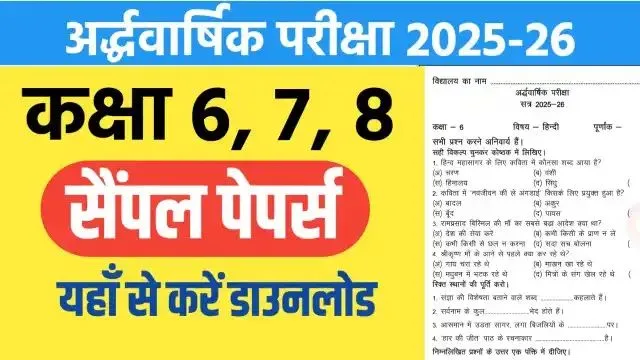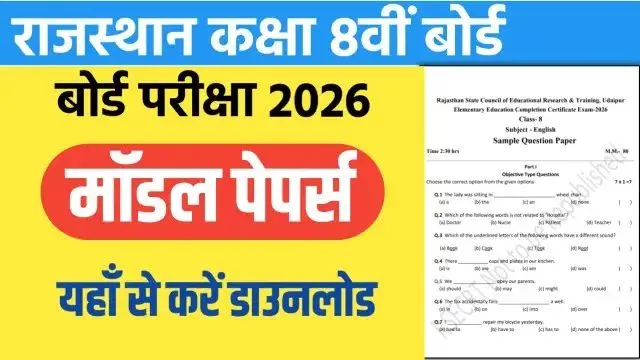The Hollow Men MCQ Quiz : T. S. Eliot’s The Hollow Men (1925) is one of the most profound reflections of post-war spiritual emptiness and moral paralysis. Written after The Waste Land, it continues Eliot’s exploration of human despair and the decay of faith in the modern world.
The poem opens with two epigraphs — “Mistah Kurtz—he dead” from Conrad’s Heart of Darkness and “A penny for the Old Guy,” referring to Guy Fawkes. Both epigraphs symbolize moral corruption and futility. Kurtz’s spiritual hollowness and the ritualistic celebration of Fawkes’ failure merge into Eliot’s vision of a world filled with men who are “stuffed” yet “hollow,” lifeless scarecrows without inner substance or divine guidance.
In the first section, Eliot introduces the “Hollow Men” as soulless beings, incapable of meaningful communication. Their “voices are dry” and “meaningless,” echoing the spiritual aridity of modern existence. Their world is a barren desert where hope has withered.
In section two, the fear of “eyes” — symbolic of divine judgment — dominates. The Hollow Men dread confronting truth or reality, seeking refuge in disguises, like “scarecrows.” Eliot contrasts this cowardice with the courage of the spiritually awakened who can face divine light.
The third section paints a landscape of death and sterility — “the dead land,” with “cactus” and “stone images.” Yet even in this desolation flickers a faint, fading star — a symbol of hope and divine grace.
In sections four and five, Eliot fuses Biblical imagery with nursery rhyme rhythm. The Hollow Men’s song “Here we go round the prickly pear” turns childish repetition into a ritual of despair. The haunting refrain “Between the idea / And the reality… Falls the Shadow” reflects paralysis between intention and action, faith and fulfillment. The poem concludes with the chilling prophecy:
“This is the way the world ends
Not with a bang but a whimper.”
This anti-climactic ending signifies the quiet extinction of humanity’s spirit — a world where spiritual death precedes physical one.
Form, Meter, and Rhyme Scheme:
The Hollow Men is written in free verse, blending fragments of songs, prayers, and allusions. It doesn’t have any set rhyme scheme.
Read text of The Hollow Men.
The Hollow Men MCQ Quiz
Discover more from Gyankundli
Subscribe to get the latest posts sent to your email.
